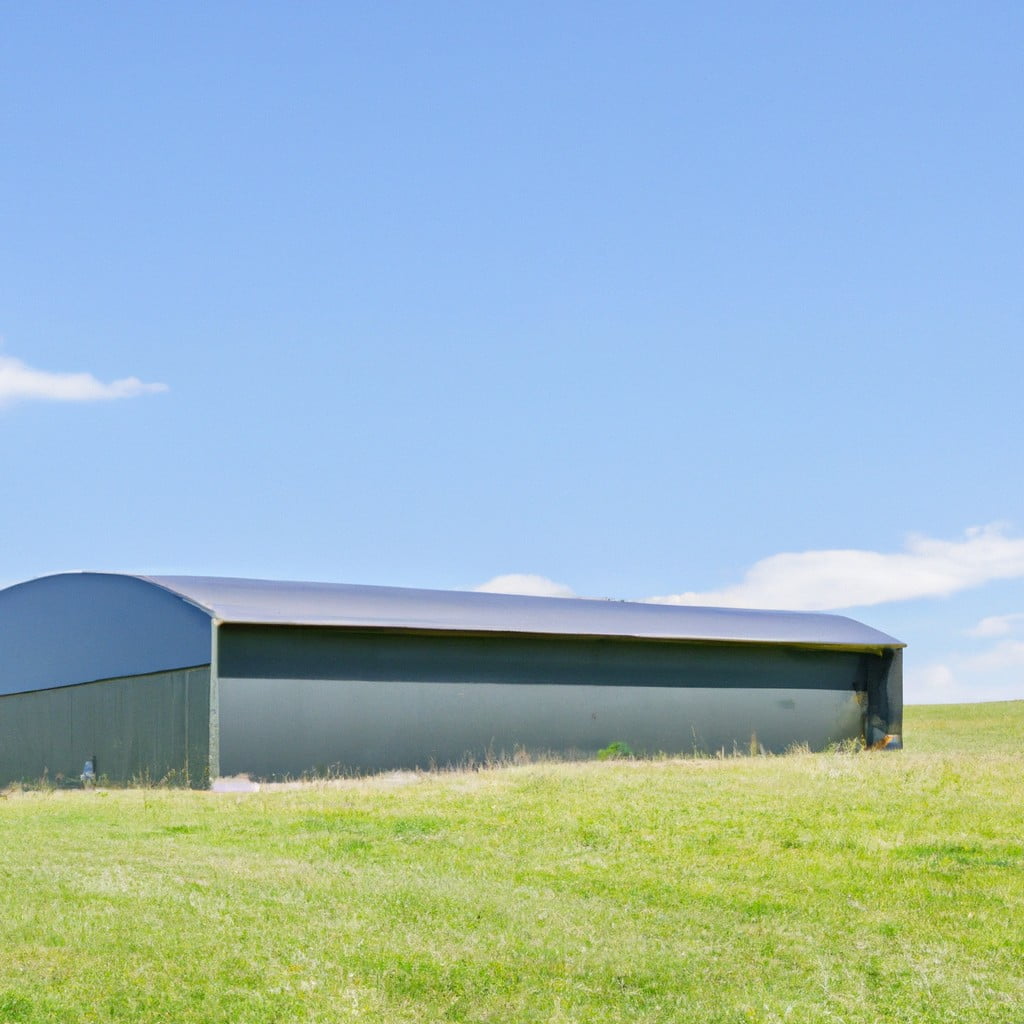Improving food storage facilities plays a significant role in advancing the sustainability of farming by reducing post-harvest losses, enhancing quality management, and conserving resources.
Improving food storage facilities plays a pivotal role in making farming more sustainable by reducing post-harvest losses, enhancing food security, and minimizing the environmental impact of agriculture.
By employing advanced technologies and systems, farmers can better control the conditions of stored produce, thereby extending their shelf life and reducing waste.
This not only ensures a steady supply of food throughout the year but also decreases the need for excessive production, thus conserving resources.
In the following sections, we will delve deeper into the importance of improved food storage facilities and their contribution to sustainable farming, offering a comprehensive understanding of this crucial aspect of agriculture.
Key takeaways:
- Improved food storage facilities reduce post-harvest losses.
- Enhanced storage facilities conserve resources and reduce waste.
- Advanced storage methods contribute to global food security.
- Improved storage facilities have environmental benefits and promote conservation.
- Upgrading food storage facilities poses challenges but is essential for sustainable farming.
Look Inside:
Role and Importance of Food Storage Facilities for Sustainable Farming

To minimize post-harvest losses, farmers must be able to efficiently store produce in a controlled environment. Enhanced storage facilities prolong the freshness period, reducing the need for quick consumption or hurried marketing. Interruptions in the supply-demand chain, such as seasonal fluctuations, can thus be mitigated.
Apart from conserving the quality of produce, improved storage facilities assist in resource management. The reduction in waste translates to a lower requirement for production resources, including water, land, and energy. This aspect lends considerably to the preservation of ecosystems and biodiversity.
Lastly, advanced food storage facilities contribute to global food security. With a better capacity to store food and maintain its nutritional quality, regional imbalances in food production and demand can be alleviated, providing a more equitable food distribution and a step towards a hunger-free world.
Exploring the Link Between Improved Food Storage Facilities and Farming Sustainability
Improved food storage facilities provide an avenue for minimizing post-harvest losses, which are significant contributors to the lack of sustainability in farming. By refining the way agricultural products are stored, a consistent food supply chain can be maintained even during off-peak seasons, thereby reducing reliance on continuous production.
Proper food storage also goes a long way in preserving the quality and nutritional value of farm produce. This leads to less product rejection and food wastage, hence less need for over-harvesting and consequently, less strain on farmland and resources.
Furthermore, with effective management, these facilities can play a key role in conserving energy. By using renewable energy sources and implementing smart monitoring systems, energy usage can be optimized, reducing the carbon footprint of agricultural practices.
Lastly, facilities that can maintain optimal conditions for various types of produce can prevent the proliferation of pests and diseases – curbing the need for harmful pesticides and enhancing the overall health of ecosystems. In essence, improvements in food storage facilities thus create valuable synergies for sustainability, enhancing the economy, environment, and societal health benefits in unison.
Environmental Benefits of Improved Food Storage in Agriculture
Improved storage facilities make a positive environmental impact. By minimizing post-harvest losses, they reduce the amount of land, water, and labor used in producing excess crops to compensate for waste.
A longer shelf life for produce can decrease transportation frequency, leading to a reduction in carbon emissions. Moreover, controlled conditions within advanced storage structures help maintain optimal humidity and temperature, which upholds produce quality while curtailing the energy consumption often associated with traditional storage practices.
Thereby, advanced storage methods streamline resource usage, promoting environmental conservation.
Case Studies Showcasing the Impact of Food Storage Advances in Farming
Looking at real-world instances offers a deeper understanding of the concrete benefits brought about by progress in food storage facilities. One such example can be seen in the rice farming sector of Vietnam. Here, the use of hermetic storage technology, that is safeguarding harvested grains in airtight containers, has drastically reduced crop losses caused by A. flavus, a harmful fungus. This innovation not only ensures the preservation of yields but also the safety of the grains for consumption.
On another hand, the wine industry in southern France significantly benefited from the implementation of climate-controlled cellars. This advancement brought about a leap in maintaining the quality of the stored wines, allowing producers to better manage the aging process, ultimately increasing the value of the product.
These case studies illustrate that better food storage in farming can enhance the quality of produce, lower crop losses, and result in increased profits for farmers, promoting agriculture’s sustainability.
Challenges Involved in Improving Food Storage Facilities for Farming
Despite the clear sustainability benefits, the upgrade of food storage facilities sees a set of obstacles. A major impediment is the high initial investment required for advanced technologies and infrastructure. Small-scale farmers or those in developing regions may find these costs prohibitive.
Additionally, there is a need for training to ensure the correct usage of these facilities, which poses an additional hurdle. Unstable electricity supply in rural areas can also be disruptive, leading to inconsistent control over climatic conditions. Furthermore, improper maintenance could render even the most advanced facilities inefficient.
Tackling these challenges requires a collective effort involving farm owners, governments, and supporting organizations.
Concluding Thoughts On the Future of Sustainable Farming With Improved Food Storage Facilities
In embracing advanced storage facilities, the agricultural sector bolsters its capability to address food security challenges and enhances its environmental stewardship. This trend will continue as innovations in storage technology surface.
Farmers and agricultural enterprises will need to consider investment in storage solutions as a strategic and essential initiative for a more sustainable future. From reduction in waste to optimization of resources, the benefits are promising.
So, the future of sustainable farming lies, in part, with robust efforts towards upgrading food storage facilities.
FAQ
What is storage in cookery?
Storage in cookery refers to the method of preserving raw or finished food products in safe containers under controlled conditions to prevent spoilage and contamination.
How can advanced storage facilities reduce food wastage in farming?
Advanced storage facilities can significantly reduce food wastage in farming by providing controlled environments that extend the shelf-life of produce, thus preventing degradation and loss.
How does the concept of vertical farming influence the need for storage facilities in urban agriculture?
Vertical farming, by fostering onsite production of plants, significantly reduces the need for extensive storage facilities often associated with conventional urban agriculture.
Can improved storage facilities contribute to a reduction in carbon emissions in the agriculture sector?
Yes, improved storage facilities can indeed contribute to a reduction in carbon emissions in the agriculture sector by limiting waste and reducing the need for repeat harvests and transport.




